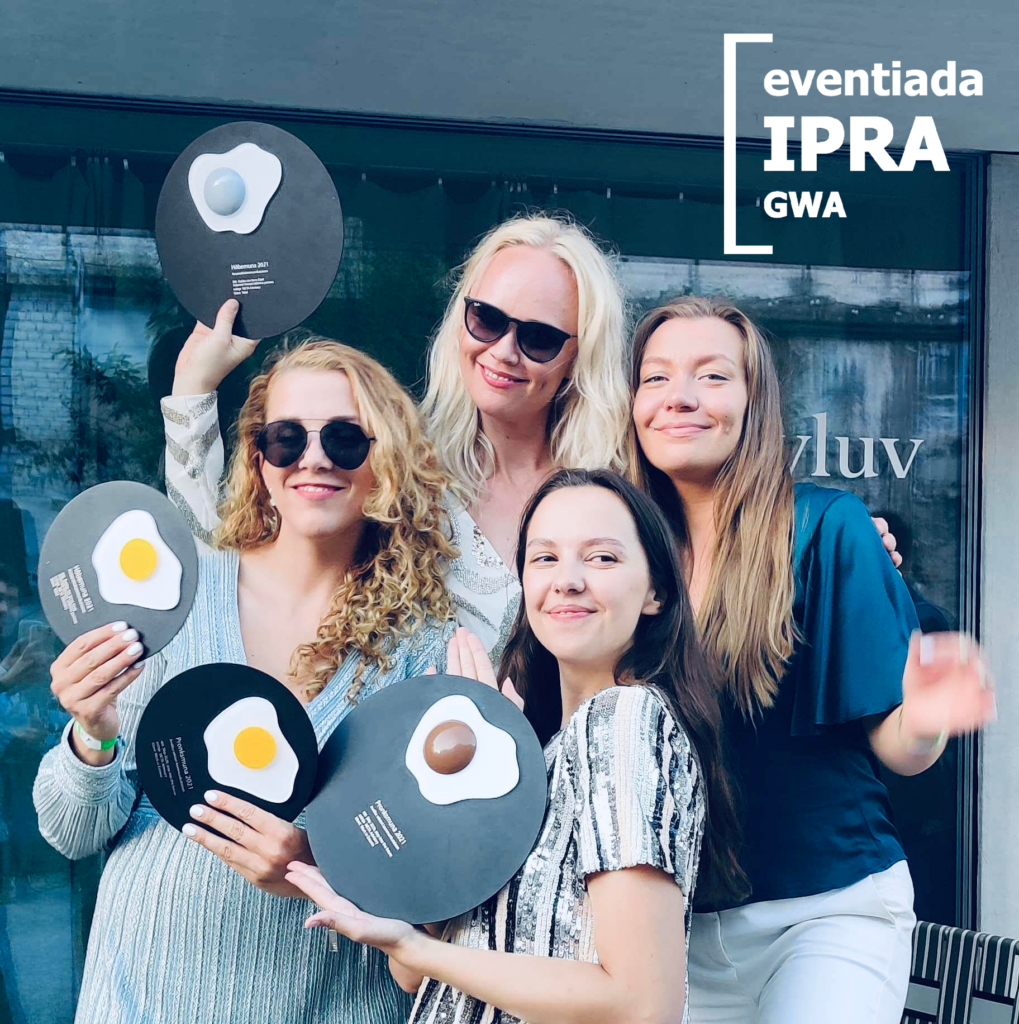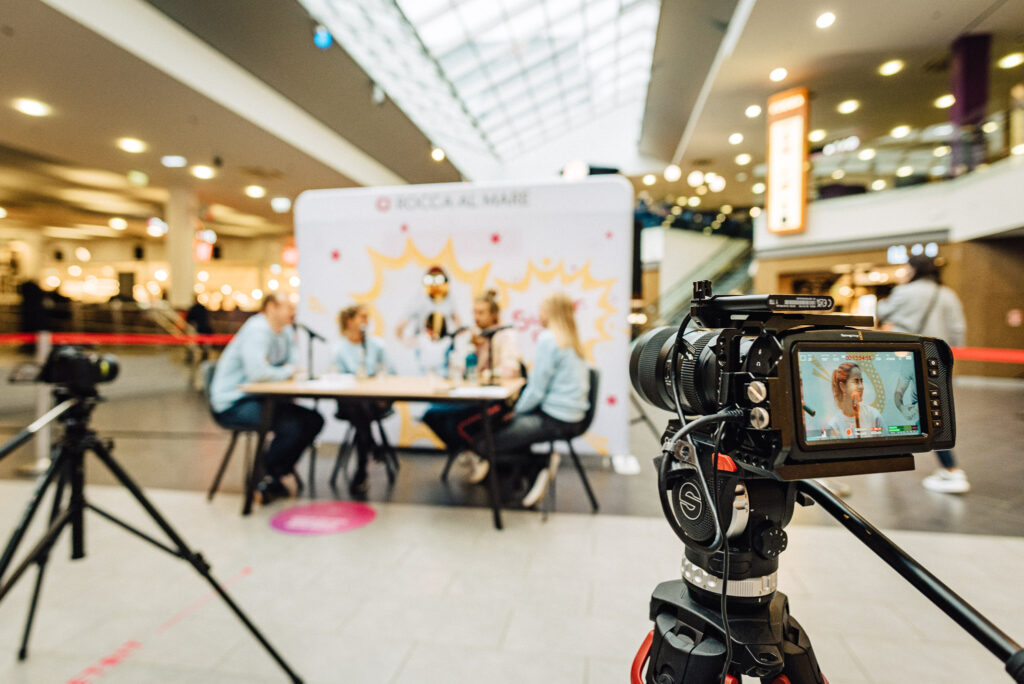The Rules of the Digital Age: Why a Smart Brand Can’t Afford Summer Silence
Year by year, there are fewer and fewer reasons to exclude summer from your communications plan. Digital media has changed the way people consume information to such an extent that staying silent in summer no longer signals a strategic pause, it means giving away visibility to a more active competitor.
Just five years ago, the common belief was: “Don’t try to push positive stories to the media in Summer; they’ll go unnoticed. People don’t consume media during summer.”
But the rise of digital media has shifted this. 91% of Estonians consume news on mobile devices. News reaches people everywhere: on the beach, in the forest, or on public transport. Summer no longer puts media consumption on pause. Only the way people consume information changes.
Today’s PR is about delivering the right content at the right time and place to the right audience. This no longer happens solely through a newspaper article or press release. The same story might reach someone through a social media platform, a community group or even an influencer. Summer is the best time to convey your brand’s message.
Be Where Your Client Is
As a communications agency, our first question to clients is: “What are your clients hiring you for?” That’s the core from which all meaningful action and visibility-building begins. People don’t choose brands because they’re loud, beautiful or active.
They “hire” brands to solve specific challenges in their life or work: to make decisions easier, provide confidence, bring clarity, spark ideas or improve their mood. If you know who your clients are, what you solve for them, and when they’re ready to listen, you won’t have “silent months” in your annual calendar. For many brands, summer can be one of the most effective periods to stand out: with less noise, more space, and a more receptive audience.
“Less noise, more space and a more receptive audience”
When You’re Present, You’re Remembered
When work pace slows and calendars open up, people start looking around. They reevaluate service providers, seek new solutions and shape new consumption habits. This is the moment when a brand can position itself meaningfully and calmly: without noise, but with purpose.
“A brand that understands its target audience also consumes content in summer, knows that vacation doesn’t mean needs disappear. It just means the environment is different. The same brand knows how to adapt its communication to this new environment.”
A Brand That Goes Silent in Summer Loses More Than Media Coverage
The best agencies build summer content packages, pitch season-appropriate stories to journalists, help leaders stay active on LinkedIn and involve influencers who convey the message naturally to consumers.
Marketing and executive leaders who understand that PR is not a seasonal campaign but a continuous trust-building effort use summer strategically. When most competitors go quiet, it’s easier to garner media attention: there’s more room for your message to be seen and a greater chance of being remembered.
Social media activism — a lazy or powerful tool?

Social media is a powerful channel that can be used for the benefit of a community. However, this requires a mastery of social media, says Laura Põldma, who studied the role of social media in community activism in her bachelor’s thesis.
- Creating a Facebook group for fighting against the closure of a hospital’s maternity ward and mobilizing a community with 3,000 members.
- Initiating an online petition to prevent the opening of a limestone quarry and the discussion of “a war strategy” in a closed social media group.
- Continuous content creation on the Facebook site of a small school to support the continuation of the school.
These are some examples of community activism in social media, which has been increasingly seen in Estonian public media in recent years. The internet is used not only by mass movements, but also by small community-based movements for whom social media offers the opportunity to express themselves both inside and outside of a local context[i]. The importance of social media as a networking tool is significant from the viewpoint of the internal dynamics of civic associations, as found by Tanel Vallimäe and Peeter Vihma, in an analysis of the results of a study conducted in 2019 by Tallinn University, the Institute of Baltic Studies, and Turu-uuringute AS, for evaluating the situation within Estonian civil society.[ii]
In the eyes of critics, on the other hand, online activism is simply slacktivism, an activity that can make people feel good, but has little effect on political decisions[iii]. So, how can social media activism be dealt with? Is it just an activity that distracts citizens from other, more efficient forms of participation? Or is social media a thermometer that enables the measurement of a community’s mood on a certain moment? And what about the opinion that being primarily active on social media and spreading one’s message there makes an initiative less serious?
In my bachelor’s thesis “The role of social media in community activism on the example of three conflict cases”, I studied the communicative aspects, specifically of the impact of social media on community activism from the point of view of mobilization and influencing activities in three cases: the Põlva Hospital Maternity Ward, the Lüganuse Limestone Quarry, and the Harmi Elementary School Discussions with initiative leaders as well as civil society experts – Hille Hinsberg and Martin Noorkõiv, highlighted several aspects that could help the 21st century activist to understand the role of social media from a mobilization and impact perspective.
Make the community’s opinion visible. Social media gives a community a voice and makes their outrage visible. The leader in one case study found that social media has made civil society more widely perceived, and there are many different opinions in Estonia about how to organize coexistence. The resulting pluralism is good, but there is also a downside in using social media to make resentment visible – the multiplicity of opinions. As one leader put it: when there are so many opinions, people in decisive positions may feel that it is never possible to consider everyone’s opinion. However, this hampers the activities of civil society. In such an increasingly “tight market” traditional methods – both demonstrations with slogans and protest events in Facebook – will eventually devalue.
Converting support to real actions. Social media can be useful for mapping support: one leader felt that Facebook was a kind of score-card or thermometer – as it was not known, at first, whether the community was happy with the respective closure. FB provided excellent input for leaders to understand the mood of the community. At the same time, is it worth paying attention to whether the extent of support and the thousands of members who joined the Facebook group add the actual value to the initiative? How many of those who are active on Facebook, are ready to do something in real life? This question arose for the activists themselves as well. Online activism has been seen as “lazy” activism, which speaks to persons who do not find time to participate actively.[iv]
At the same time, in the case of the Põlva Hospital’s Maternity Ward, it can be seen that activism, in the form of joining the Facebook group, was also expressed in real-life activities. A large number of signatures were collected – over 9,000 – and the collection of signatures on paper was not initiated by the leaders, but by other members of the community. In conclusion, it all depends on what other methods are used – combining different channels may help compensate the negative aspects of another. But you should compare comparable things. Many people, who are activists in social media, did absolutely nothing for the community in the past.[v] So, online activism is still better than no participation at all.
The digital gap in the digital country. Social networks include the risk of exacerbating inequalities if social media users tend to be more technologically skilled and have a higher level of human, social, and economic capital.[vi] It is worth noting that if an initiative is only active on social media, it may exclude part of a community from the debate. Be it older people or those who have consciously chosen to stay away from social media.
At the same time, one may ask whether Estonia, which is (according to the 2019 report of the European Center for Policy Studies) the highest-ranked country in the European Union in terms of digital learning and has a high level of computer literacy[vii], should worry about the digital gap at all? Although the problem may not be as great as in other countries, it is reasonable to consider that certain groups are more difficult to reach through online channels. Consequently, the combination of different channels and tools is also relevant in the context of the digital gap. In addition to creating a Facebook group, you should also bring your messages to the media, organize face-to-face events and, if necessary, establish direct contacts.
The issue of credibility. If an activity is only taking place in social media, its influence diminishes and decision-makers may think: “let them discuss it somewhere on their own and live out their resentment, life goes on”. Indeed: do decision-makers perceive a discussion in a Facebook group as equivalent to, for example, an editorial in an all-Estonian daily newspaper or a face-to-face meeting? There is no risk of social media not being taken seriously – the channel itself matters less than whether the message is “highlighted” in the channel, and whether the platform is right for spreading that particular message, i.e., the general ability to format and package the message. [viii] The impact of a media article can sometimes be much smaller than that of a social media posting, and a large number of voters in a group is much more influential for decision-makers.[ix]
Lack of social media competence and poor division of roles. As mentioned, social media gives communities a voice. However, not everyone’s opinion is always constructive. If the use of social media is unreasoned with several members of the community making random postings, it may not leave the best impression about the initiative. It is not necessary to censor, but a prerequisite for the successful operation of social media is a well-thought division of roles. It is certainly worthwhile to observe the experiences and journeys of other communities, as this can provide important knowledge.
Echo chamber effect. In conflicting cases of community activism, how the activists perceive the counterparts, their opinions, and arguments is important. Unfortunately, the features of social media (such as the ease of removing people from your friends list) encourage the emergence of echo chambers.[x] The “common reality” becomes socially validated in the echo chamber and can strengthen people’s world views. [xi] An explicit worldview and passion for a topic also tend to be expressed in more active, and often more emotional, speech. Although heated debates help to mobilize people, public debates are increasingly too emotional, leading to polarization and to not pursuing the long-term goals of defending the interests of communities.[xii]
In the context of influencing and the echo chamber effect, it is important to understand community awareness of how what decisions are made – and what is the vision of other stakeholders, including decision-makers – directly affects the success of protection of interests. A situation can easily arise, in an echo chamber, wherein excessive emotionality hinders the formation of constructive argumentation, and therefore directly prevents successful participation in the discussion. A situation should be avoided where officials make decisions based on economic considerations but are hit by activists with very different “sticks”. The degree of emotionality should depend on the goal of the community: for organising a great popular movement it can be efficient, but overly aggressive action can make politicians angry and work against the community.[xiii]
The spiral of silence. According to the spiral of silence theory, people censor opinions that they assume are unpopular.[xiv] It is clear that the wider the message of a community is, the more people fit under that wider message. By becoming too polarized and extreme (facilitated by the echo chamber effect) a community may lose members, as common ground becomes smaller and smaller. At the same time, it has been pointed out that due to the disappearance of walls around social environments, every narrator must consider whether they either insult someone or smooth their message to a degree that it is no longer attractive to anyone.[xv] Here, each community must find the right balance – to involve as many from the community as possible, but without losing its uniqueness.
Laura Põldma defended her bachelor’s thesis “The role of social media in community activism on the example of three conflict cases” this year at the University of Tartu. The full paper is available in the UT Digital Archive DSpace.
[i] Ruiu, M., Ragnedda, M. (2017). Empowering local communities through collective grassroots actions: The case of “No Al Progetto Eleonora” in the Arborea District (OR, Sardinia). The Communication Review, 20(1), pg. 51. https://doi.org/10.1080/10714421.2016.127227
[ii] Vallimäe, P., Vihma, T. (2019). Eesti mittetulundusühingud ja koostöö. Riigikogu toimetised, 40, pg. 185. https://rito.riigikogu.ee/nr-40/eesti-mittetulundusuhingud-ja-koostoo/
[iii] Christensen, H. S. (2011). Political activities on the Internet: Slacktivism or political participation by other means. First Monday, 16(2), pg. 9. https://doi.org/10.5210/fm.v16i2.3336
[iv] Cammaerts, B. (2015). Social media and activism. R. Mansell, P. Hwa (toim). The International Encyclopedia of Digital Communication and Society, pg. 7. Oxford: Wiley-Blackwell. https://eprints.lse.ac.uk/62090/1/Social_media_and.pdf
[v] Noorkõiv, M. (2021). Author’s interview in the framework of a bachelor’s thesis.
[vi] Valenzuela, S., Arriagada, A., Scherman, A. (2012). The Social Media Basis of Youth Protest Behavior: The Case of Chile. Journal of Communication, 62(2), pg. 13. https://doi.org/10.1111/j.1460-2466.2012.01635.x
[vii] Eesti on kõige digiõpihimulisem riik Euroopas. (2019). HITSA, 11. December. Kasutatud 02.02.2020, https://www.hitsa.ee/uudised-1/eesti-on-koige-digiopihimulisem-riik-euroopas
[viii] Hinsberg, H. (2020). Author’s interview in the framework of a bachelor’s thesis.
[ix] Noorkõiv, M. (2021). Author’s interview in the framework of a bachelor’s thesis.
[x] Greijdanus, H., Fernandes, C. A., Turner-Zwinkels, F., Honari, A., Roos, C.A., Rosenbusch, H., Postmes, T. (2020). The psychology of online activism and social movements: relations between online and offline collective action. Current Opinion in Psychology, 35, pg. 50. https://doi.org/10.1016/j.copsyc.2020.03.003
[xi] Greijdanus, H., Fernandes, C. A., Turner-Zwinkels, F., Honari, A., Roos, C.A., Rosenbusch, H., Postmes, T. (2020). The psychology of online activism and social movements: relations between online and offline collective action. Current Opinion in Psychology, 35, pg. 50. https://doi.org/10.1016/j.copsyc.2020.03.003
[xii][xii] Vallimäe, P., Vihma, T. (2019). Eesti mittetulundusühingud ja koostöö. Riigikogu toimetised, 40, pg. 182. https://rito.riigikogu.ee/nr-40/eesti-mittetulundusuhingud-ja-koostoo/
[xiii] Hinsberg, H., Noorkõiv, M. (2021). Author’s interviews in the framework of a bachelor’s thesis.
[xiv] Greijdanus, H., Fernandes, C. A., Turner-Zwinkels, F., Honari, A., Roos, C.A., Rosenbusch, H., Postmes, T. (2020). The psychology of online activism and social movements: relations between online and offline collective action. Current Opinion in Psychology, 35, pg. 50. https://doi.org/10.1016/j.copsyc.2020.03.003
[xv] Viik, K. (2019). Konteksti häving sotsiaalmeedias. Postimees, 17. October. Used 11.01.2020, https://kultuur.err.ee/992749/kadi-viik-konteksti-having-sotsiaalmeedias
META Advisory Wins Grand Prix at Region’s Largest Communications Awards
The branding campaign “Skip 2020. Step into the future.” led by Work in Estonia and Meta Advisory has been announced as the winner of the category for the best employer branding campaign at Eventiada IPRA GWA. This year, a record number of participants from a total of 15 countries took part in the largest communication competition in the region.
The aim of the 11th Eventiada IPRA GWA competition was to celebrate the best communication campaigns of the year. Meta Advisory and Work in Estonia’s “Skip 2020. Step into the future.” was nominated in two major categories — first place was received for creating the Best HR Campaign in Turbulent Times. The campaign also won the all-new award category for activities contributing to sustainable development.
Work in Estonia’s “Skip 2020. Step into the future.” focused on maintaining Estonia’s high-level reputation as a destination country for foreign IT talent. “Employer branding is of growing importance for every company and organisation. The fight for talent has been ongoing for a few years now, but is only beginning to reach its peak. The Skip 2020 success story shows that integrated campaigns, where the digital is not separated from the traditional communications, but are rather designed to support one another, are the campaigns that have a huge impact,” commented Ann Hiiemaa, META’s New Business Development Manager and a member of the Skip2020 project team, on the key skill of a modern communications agency being the ability to combine media communication, marketing, advertising and social media.
During the Skip2020 campaign, 222 new job offers were added to the Work in Estonia page, 17,242 people visited the campaign page, and 124 “Possible only in 2020” stories from people in the IT sector from 35 countries were written on the page. The campaign video was viewed more than 343,000 times in two weeks.
The META Skip2020 team consisted of Maarja Karmin, Laura Põldma, Anni Türkson and Ann Hiiemaa. The project manager of Work in Estonia was Kristi Veskus, the digital partner of the campaign was the agency Age Creative.a
The Eventiada IPRA GWA competition has been organized since 2011 by the Orta Communications Group and the International Public Relations Association. This year, the jury included 35 communication experts from 17 different countries.
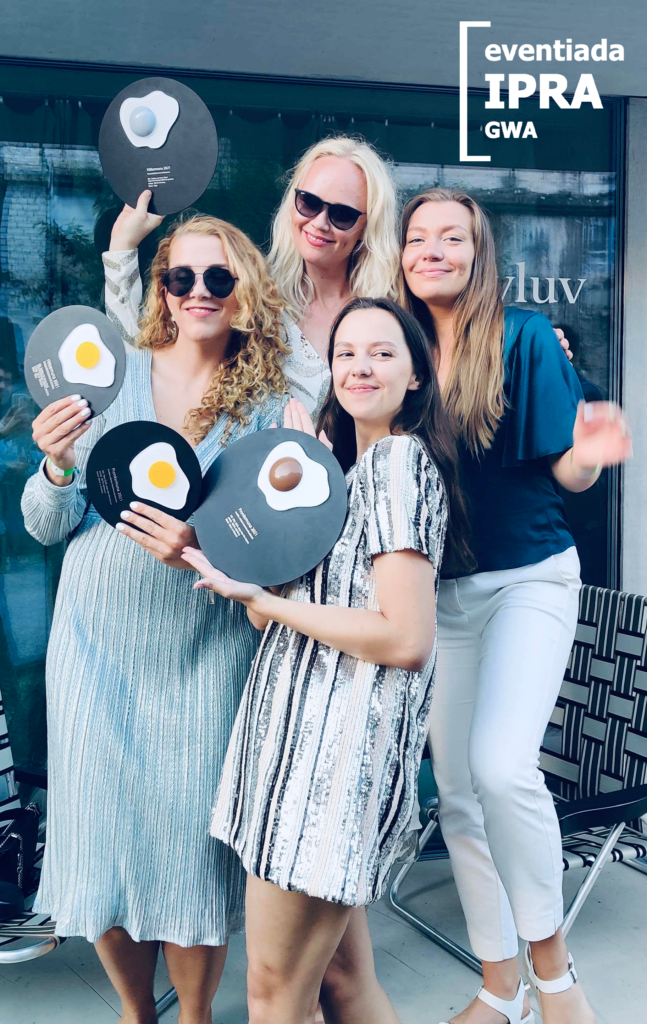
5 tips for influencers for an effective cooperation: PR agency’s view

The title influencer can be attributed to virtually anyone active on social media. Social media gives a voice to everyone – anyone can create content.
Having worked as a PR consultant with world-renowned brands and many content creators, I have made a number of observations over the years that could be useful both for a content creator and their client. What are the best practices for influencers, and how can routines be put in place to help ensure that a client returns?
1. Stay loyal
One of the biggest mistakes an influencer can make is to rush into a new collaboration with their client’s competitor immediately after the end of the cooperation with a client. This does not leave a good impression on cooperation partners or agencies. As an influencer you should maintain your authenticity and stay loyal to those brands with whom you have had a good cooperation, and whose products you use outside of a work relationship.
This way, you secure your professional image and show authenticity to your followers. This will increase the chances that a client will want to work with you again – you never know, maybe they will offer you a proposal for a long-term cooperation or an opportunity to develop a completely new product together.
2. Don’t become a Top Shop ad
This and the first point complement each other. Brands like faces who talk about products with their own character and humour, and are not already “overused”; meaning those influencers who are selective, and don’t take each and every offer.
Usually the influencers who are truest to their personality and interests, tend to receive the most offers to cooperate. Thus, it is up to the influencer to decide whether they will become just another advertisement somewhere on the main street or retain the specific content of their channel and match the brands with it, not vice versa.
3. Deadlines, deadlines, deadlines – it’s crucial
Yes, it is really important to meet deadlines. Campaigns are planned for specific periods, and in most cases, working with an influencer is only one part of an entire larger campaign. This means an attitude of “it doesn’t matter when I post the content” is definitely not the way an ideal partner would think.
It is worth noting that the need to ask and prompt about deadlines becomes incredibly inconvenient for project managers pretty quickly. It is unlikely that a person who disrespect agreements will be involved in a campaign next time.
4. Don’t black out any potential customer
So many influencers have publicly stated that people should take their work more seriously – content creation takes a lot of time and preparation. This is 100% true.
However, it is also important that an influencer maintains a serious image. Hence one of the most basic tenets is: public defamation of clients, both potential and existing, does not create any credibility and is uninviting. It is worth considering that Estonia’s small size means that stories about experiences, both good and bad, move quickly and such experiences do not stay unnoticed by others.
Of course, this does not mean that feedback about a cooperation should not be given. On the contrary: if you do not like something or have ideas about how to make something better in the future, you should tell your client. This is exactly how agencies work with their clients.
5. Share statistics and feedback
The brands themselves also want feedback. If something is wrong with their product or needs further development, such direct feedback from the consumer is extremely valuable.
Seeing an influencer’s statistics is also very useful and informative for a brand. Although most companies ask for that themselves at the end of a cooperation – or sometimes before beginning – a cooperative and proactive approach by an influencer is especially pleasing. Sharing important information and data on your own initiative is a sign of professionalism and openness to a client.
Why a podcast for a mall? The first step of Trend Makers
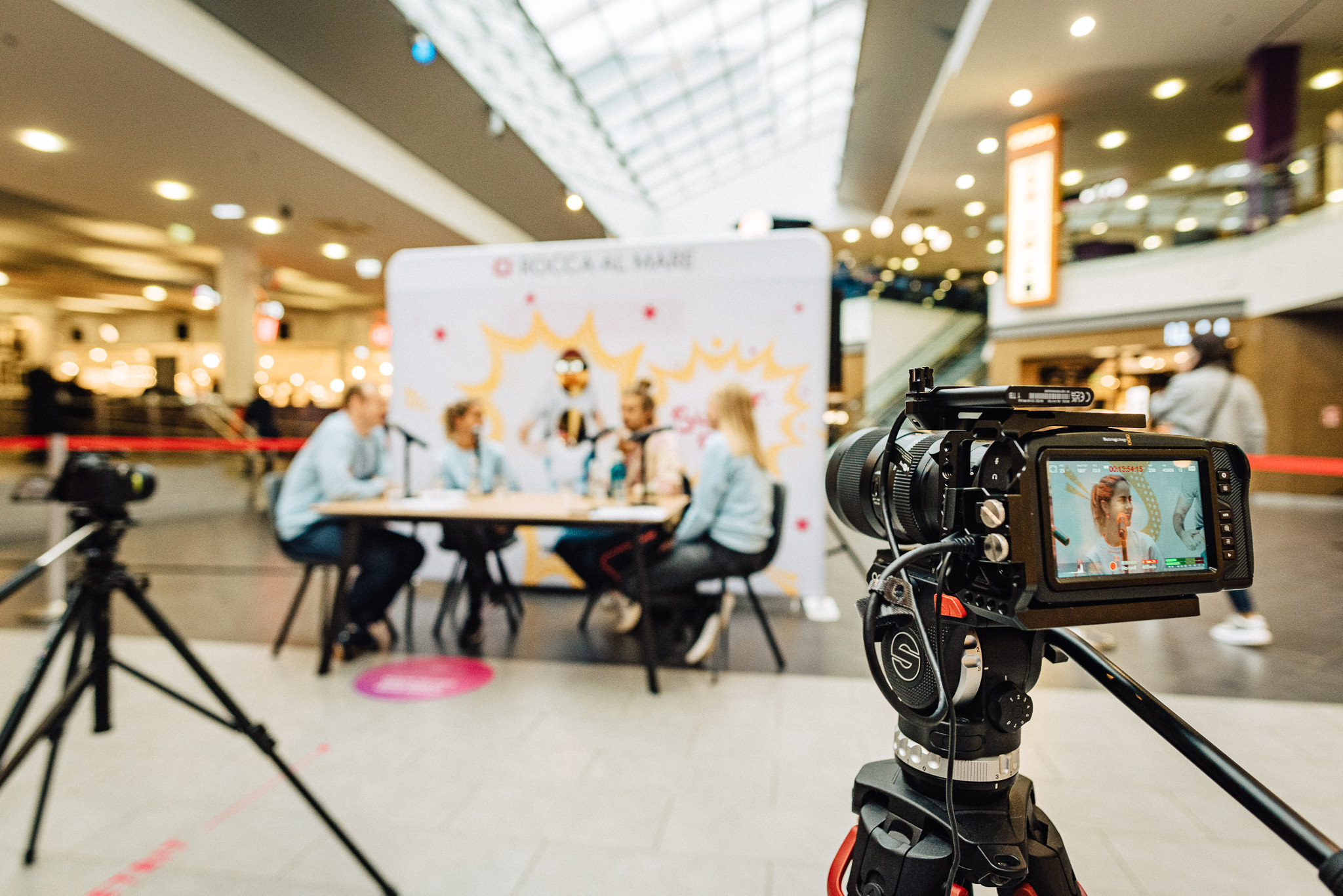
In summer 2020, we started recording the podcast Trend Makers in cooperation with the Kristiine and Rocca al Mare Centers, and the Kõrvauss studio. In Estonia, Kristiine and Rocca al Mare were the first shopping centers to create such an additional channel for themselves.
The podcast is not just a new advertising space for the centers, but their very own program.
The presenters talk to amazing and inspiring people, who may be familiar to the audience already. Trend Makers wants to offer interesting content and, through this, inspire young people. Involving the tenants of the centers helps add an expert view to the topics. And for the tenants, the extra advertising opportunity is a positive side effect.
The tenants of the Rocca al Mare and Kristiine centers value the podcast greatly as an additional output. After recording the first episodes, we also sent them to tenants to listen to, to give them an idea of what the podcast is all about. We also gave them the opportunity to suggest topics for the next episodes. We found that both centers have quite a number of tenants with many exciting topics to cover.
IDEA
The idea for the podcast, Trend Makers, came from the need to reach young people, who are no longer following traditional media. The most popular social media platforms – Instagram, and Facebook, as well as Snapchat and TikTok – are increasingly competitive.
Podcasts allows you to connect the listener to the content for a longer period of time than, for example, short videos or other visual graphics. As already mentioned, it is also a completely new output for tenants of the centers, as the episodes involve their representatives, who can talk about their activities. The best picks from conversations with the guests have also been published in other media – both on the Postimees and Delfi web portals.
STEP ONE
Marketers know that building any new environment is a huge task, so it is always wise to ask yourself, whether the future revenue outweighs the cost, and whether there will be enough people to manage the new format later on.
Making a Podcast is undoubtedly a challenge, but it’s worth it. We have made it very clear to ourselves that building a new environment will take time. It’s a consistent job. Popularity and crowds of listeners don’t come overnight. But the beginning has been promising. With each new episode we see that the number of unique listeners grows. Far away listeners are even located in North and South America, for example.
The podcast, which started in June, already has 10 episodes! Kite surfer and coach Kristiin Oja, actorKristjan Lüüs, make-up artist Gerda Miller, musicians Sander Mölder, Eik Erik Sikk and Maian Lomp, as well as Joel Juht have been among the guests. There is also a live episode with singer Daniel Levi Viinalass.

“We did a live podcast in front of visitors in the Rocca al Mare Center and linked it to the Father’s Day campaign ‘Super-Paps’. We invited a well-known father figure as a guest to the show, who was also a campaign face in social media. We also videotaped the episode and tested the podcast in video format, ”describes Helina Leif, Marketing and Communications Manager of Citycon’s Estonian centers. “Admittedly, it worked surprisingly well: so far, the video has been watched more than the corresponding episode has been listened to on Spotify. It can’t be hidden, the secret to the video’s success may be that Daniel is such a bright and charismatic personality. The success of the first experiment has given us the courage to do live podcasts in other campaigns as well.”
CHALLENGES AND ADVANTAGES
One of the biggest challenges in making a podcast is finding a suitable time. Since we have three presenters, two guests, and recording takes place in the Kõrvauss studio, finding a time that suites everyone sometimes takes several weeks. For the sake of simplification, we have now taken the path that all three presenters do not have to be present and, if possible, we get two guests at the same time and do a slightly longer episode.
The advantage of a podcast is that it allows people to consume information while they are doing something else – like exercising, driving, walking, or cleaning. Thus, it seemed only right to introduce audio media in addition to all visual channels.
Trend Makers podcasts can be listened to on Spotify, Apple Podcast, Google Podcast, and other popular media. The presenters of the Trend Makers are META Advisory consultants Jonatan Karjus, Helin Naska and the head of marketing and communication of Citycon’s Estonian centers, Helina Leif.
The Podcast can be listened to HERE.
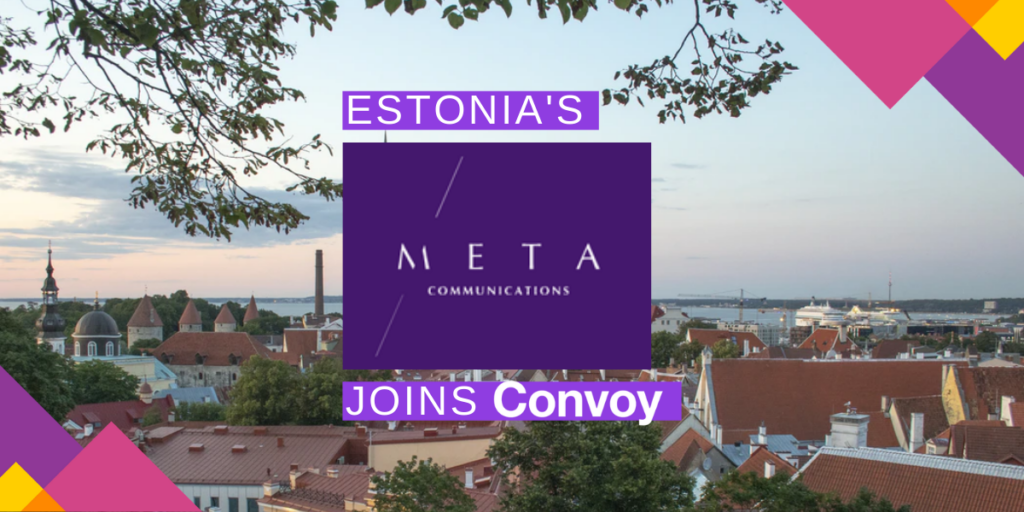
1 min read

NB! Microsoft on loobunud Internet Exploreri arendamisest ning sellele uuenduste tegemisest ja ei soovita antud internetibrauserit turvanõrkuste tõttu kasutada. Internet Explorer ei toeta enam uusi võrgustandardeid ning antud veebilahendus ei tööta siinses brauseris korrektselt.
Palun lae alla mõni moodne veebilehitseja:
The website uses cookies. Cookies are required for your convenience and web statistics. By continuing to use the website, you agree to the terms of the privacy of cookies! You can see the terms of the privacy policy in here.



